The following article highlights a speech entitled Application Management: Best Practices for Cloud Resources DevOps by Hongjun Yang (an Alibaba Cloud Technical Expert). This article is divided into three parts:
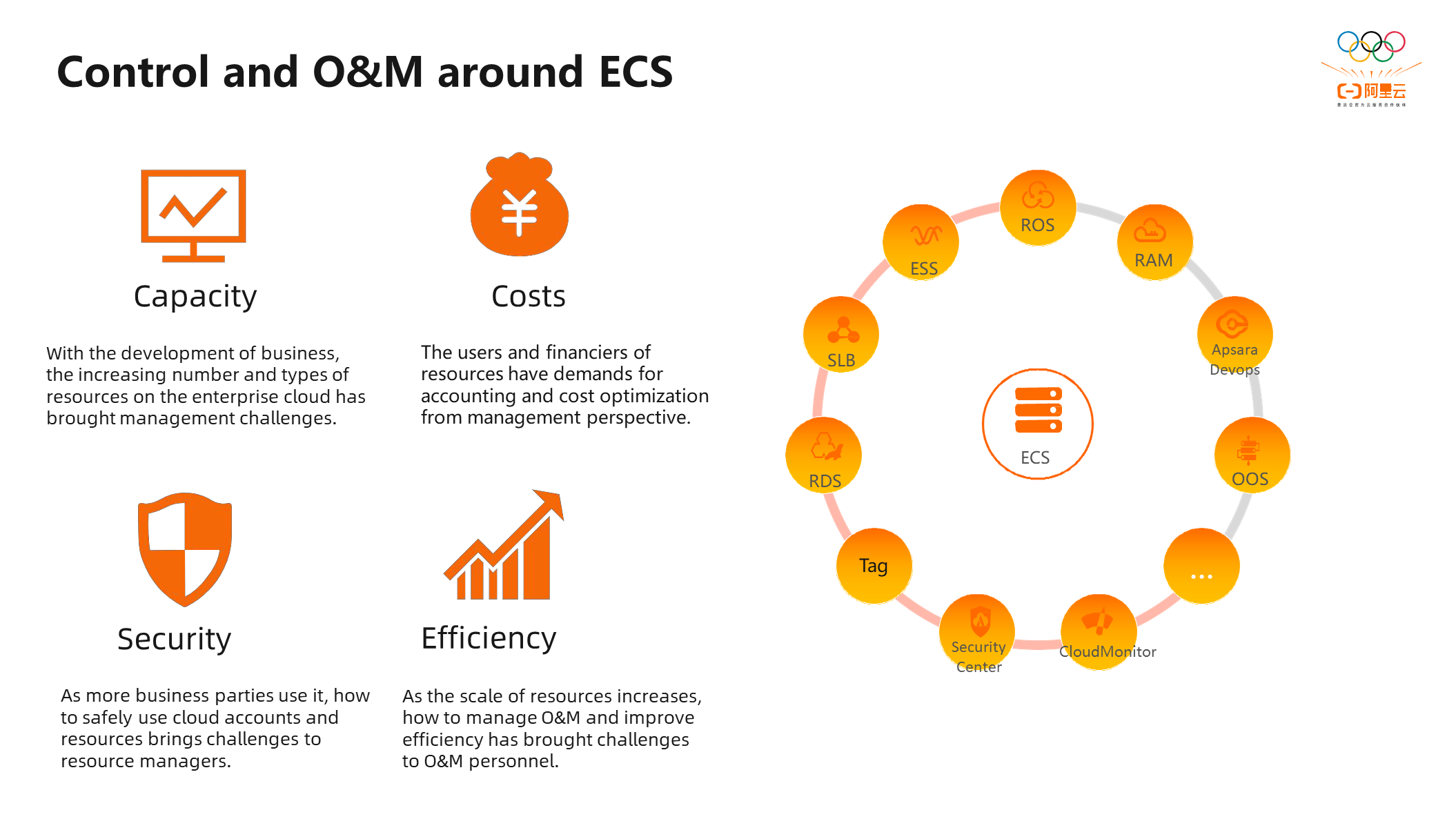
Currently, there are five major problems with the control and O&M of ECS:
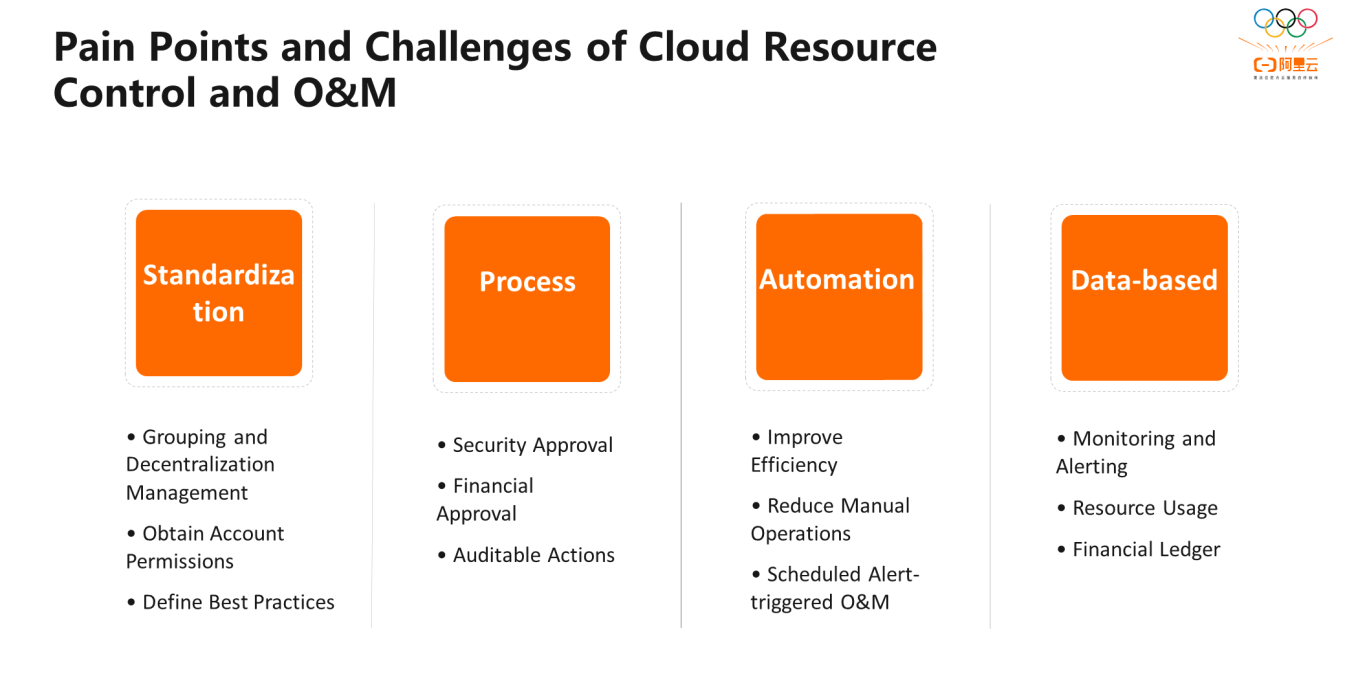
Standardized, automated, data-based, and process-based operations should be implemented to address the pain points of cloud resource management and O&M. It is necessary to realize grouping and decentralization management, get through account permissions, and speed up the approval process.
In terms of automation, it is necessary to improve efficiency, reduce human operations, ensure regular alert O&M, and pay attention to the use of resources.
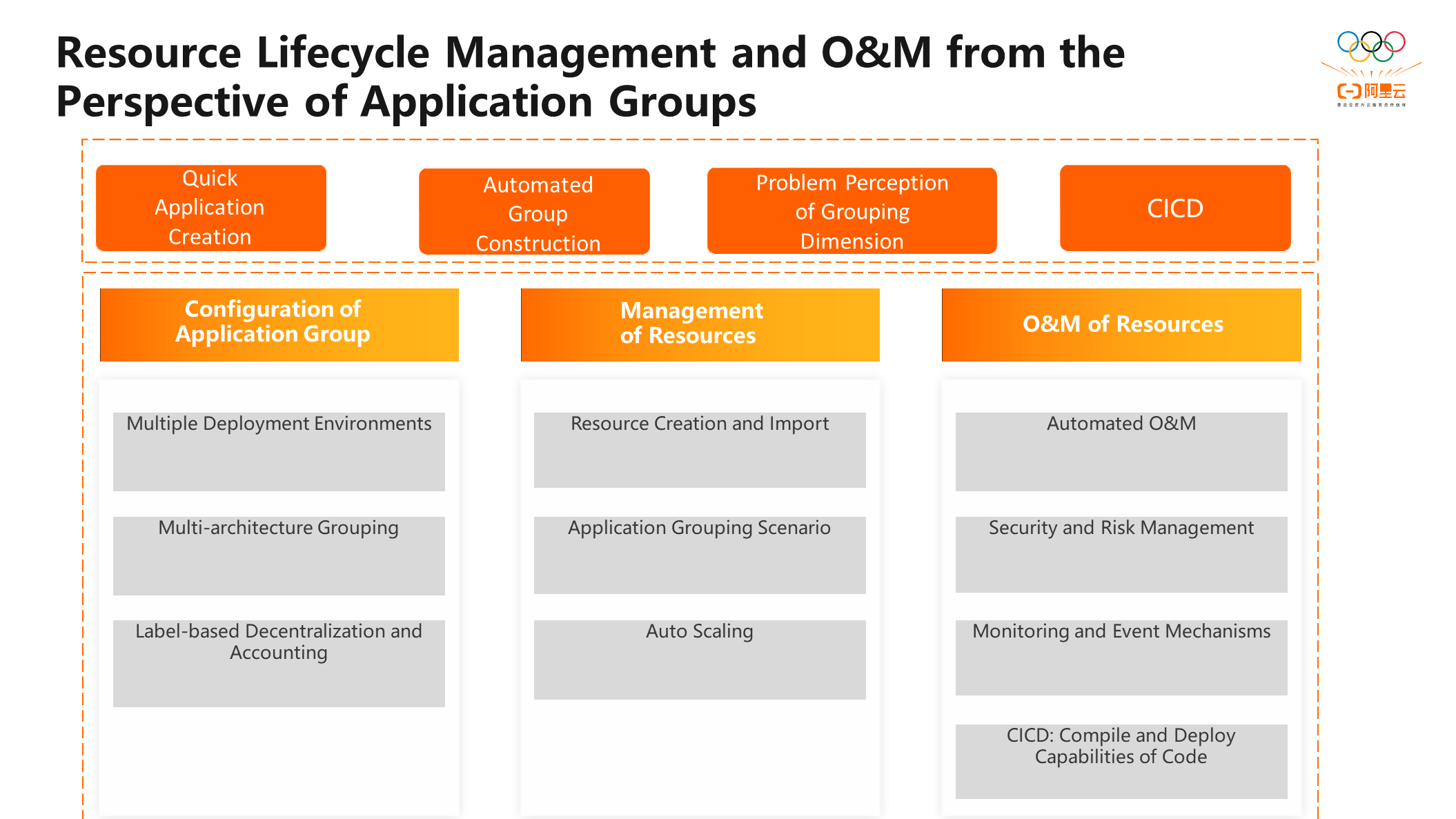
Application grouping involves three concepts.
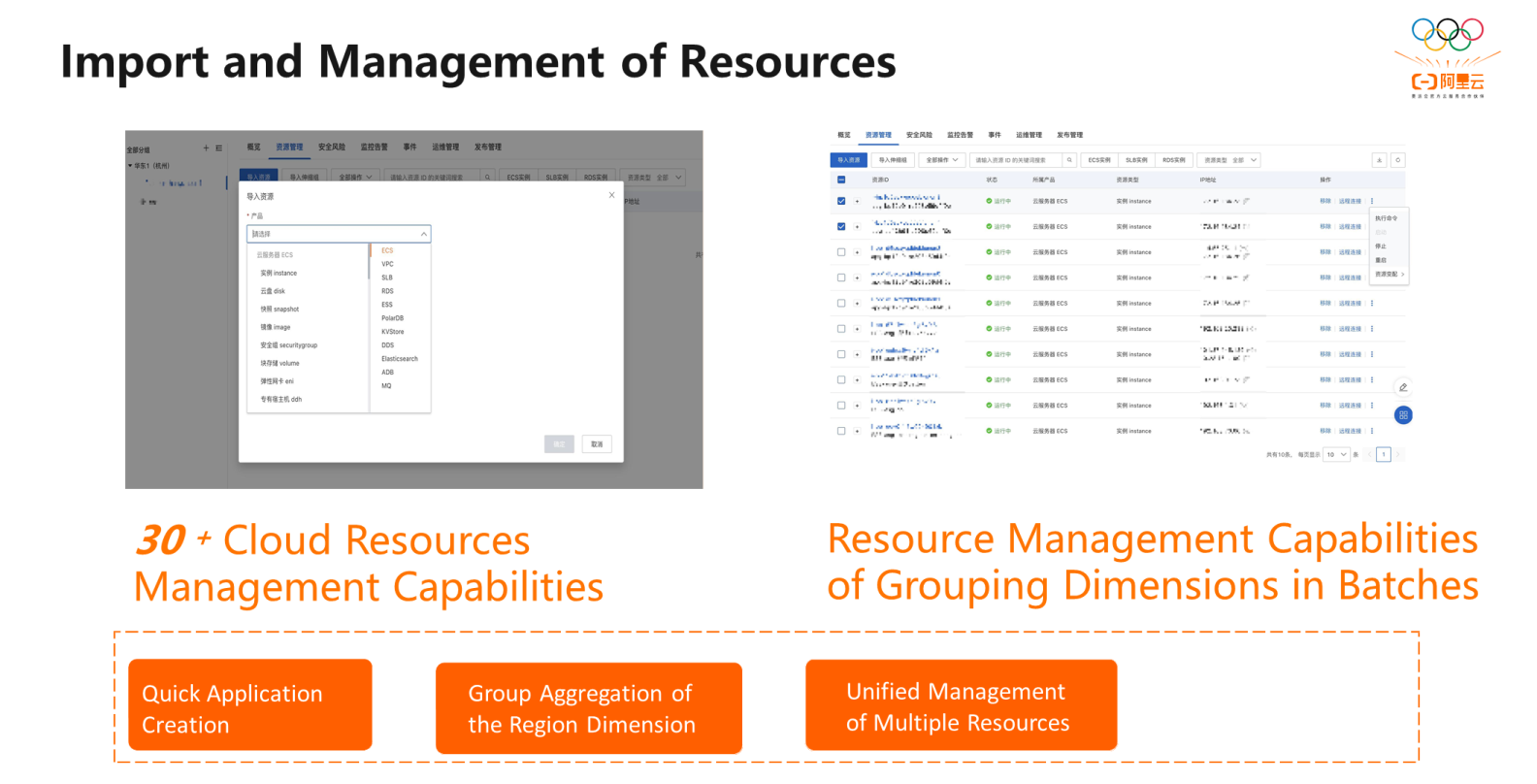
Cloud resources' problems include large quantities, numerous varieties, and difficulty managing and finding the control entrance. Alibaba Cloud allows users to import more than 30 cloud resources and manage them in a unified manner.
Alibaba Cloud puts best practices together through group management to solve the problem of fragmentation of products and facilitate quick use of these capabilities.
Alibaba Cloud associates all resources together through labels to solve the problem of resource decentralization and billing. Users can view the cost distribution of current resources, monthly bills, etc. in the expense center of their accounts.
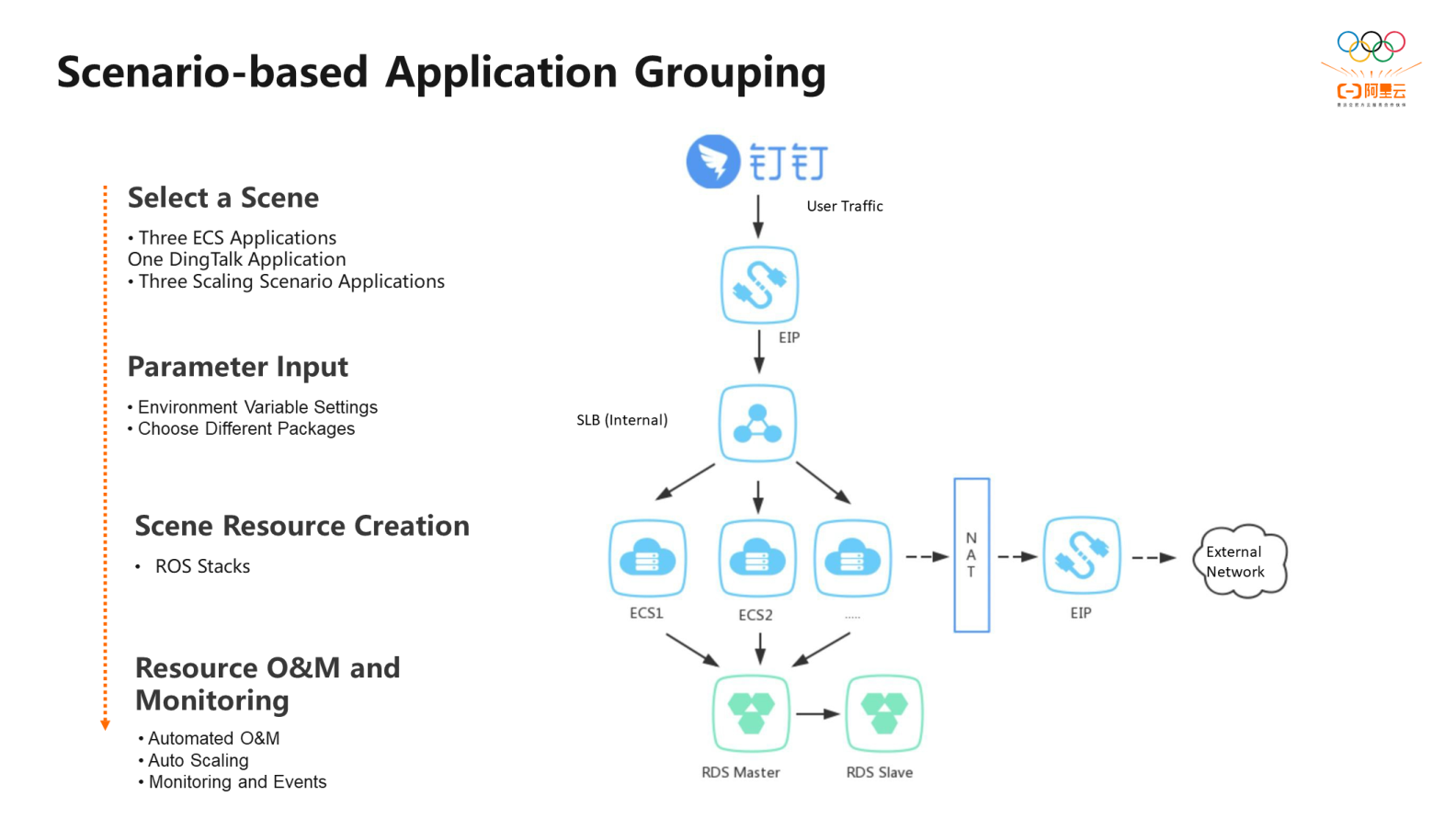
Let’s use DingTalk as an example to mount some ECS instances to the load balancing. Select DingTalk from the application group to create an application. All associations are automatically created in the form of resource sites during creation. These resources are automatically imported to the application group to facilitate subsequent control.
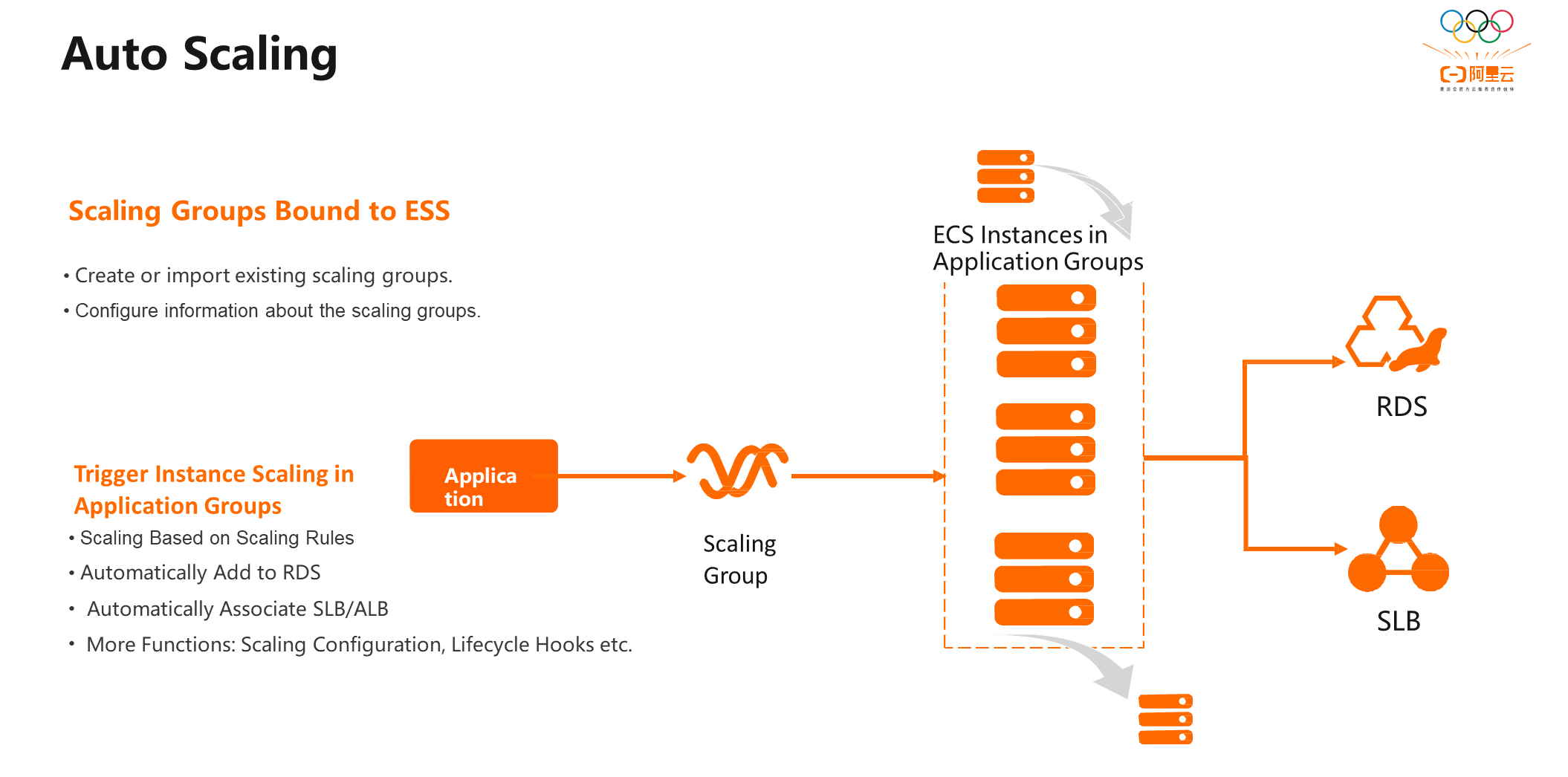
Next, let's talk about auto scaling. Application management integrates auto scaling. Each application group can be associated with an auto scaling group. Users can make auto scaling rules based on their business. The system scales based on scaling rules.
Auto scaling also supports automatically joining RDS, associating SLB/ALB, and scaling configurations and lifecycle adhesive hooks.
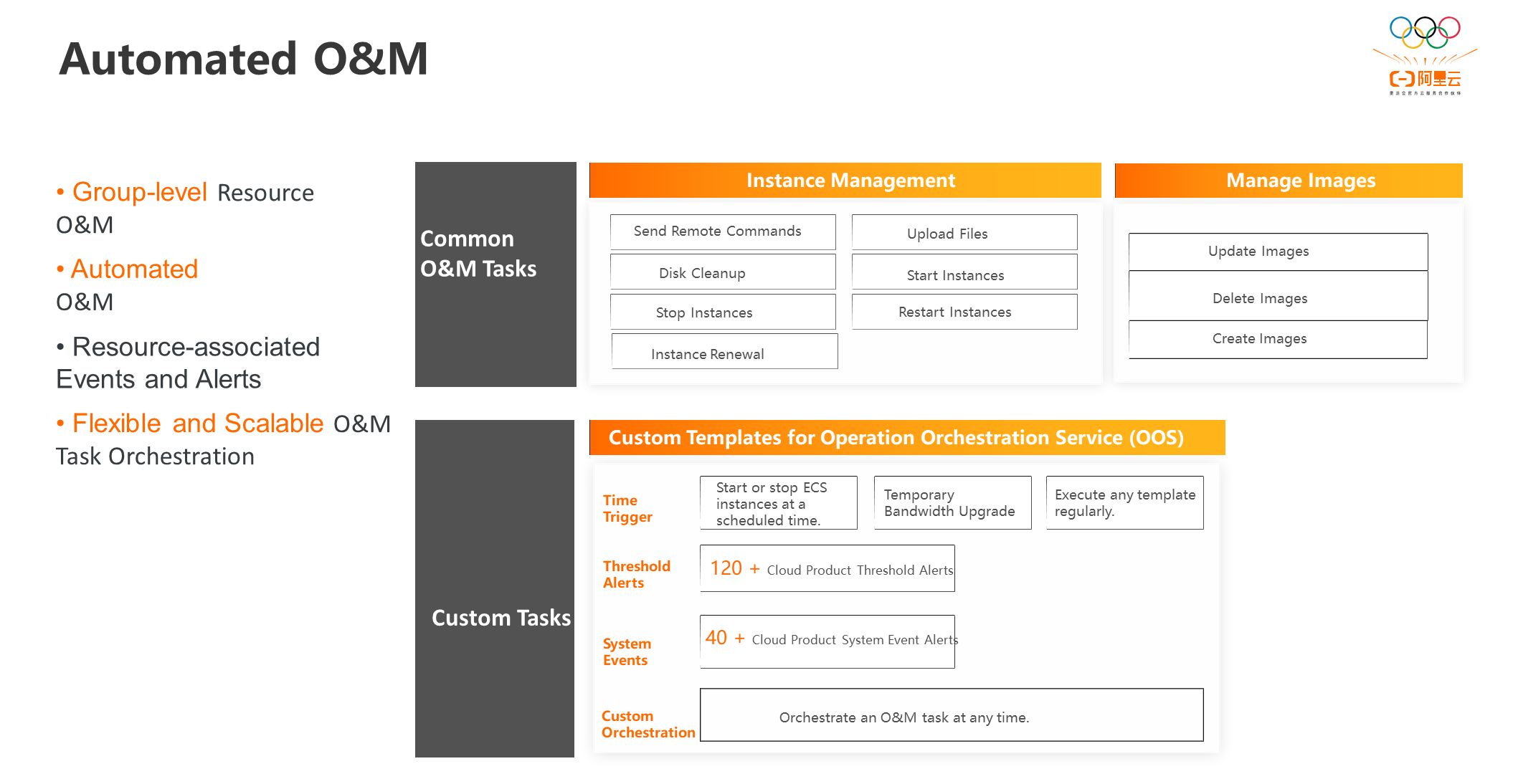
Automated O&M supports group-level resource O&M. It can be associated with resource events and alerts. Users can orchestrate O&M tasks at any time.
In terms of instance management, common O&M tasks include sending remote commands, uploading files, cleaning disks, and starting and stopping instances. In terms of image management, users can update, delete, and create images.
In the custom template of Operation Orchestration Service (OOS), automated O&M supports scheduled start and stop, temporary bandwidth upgrade, and scheduled execution of any template. Automated O&M supports over 120 threshold alerts for cloud products and more than 40 system event alerts for cloud products.
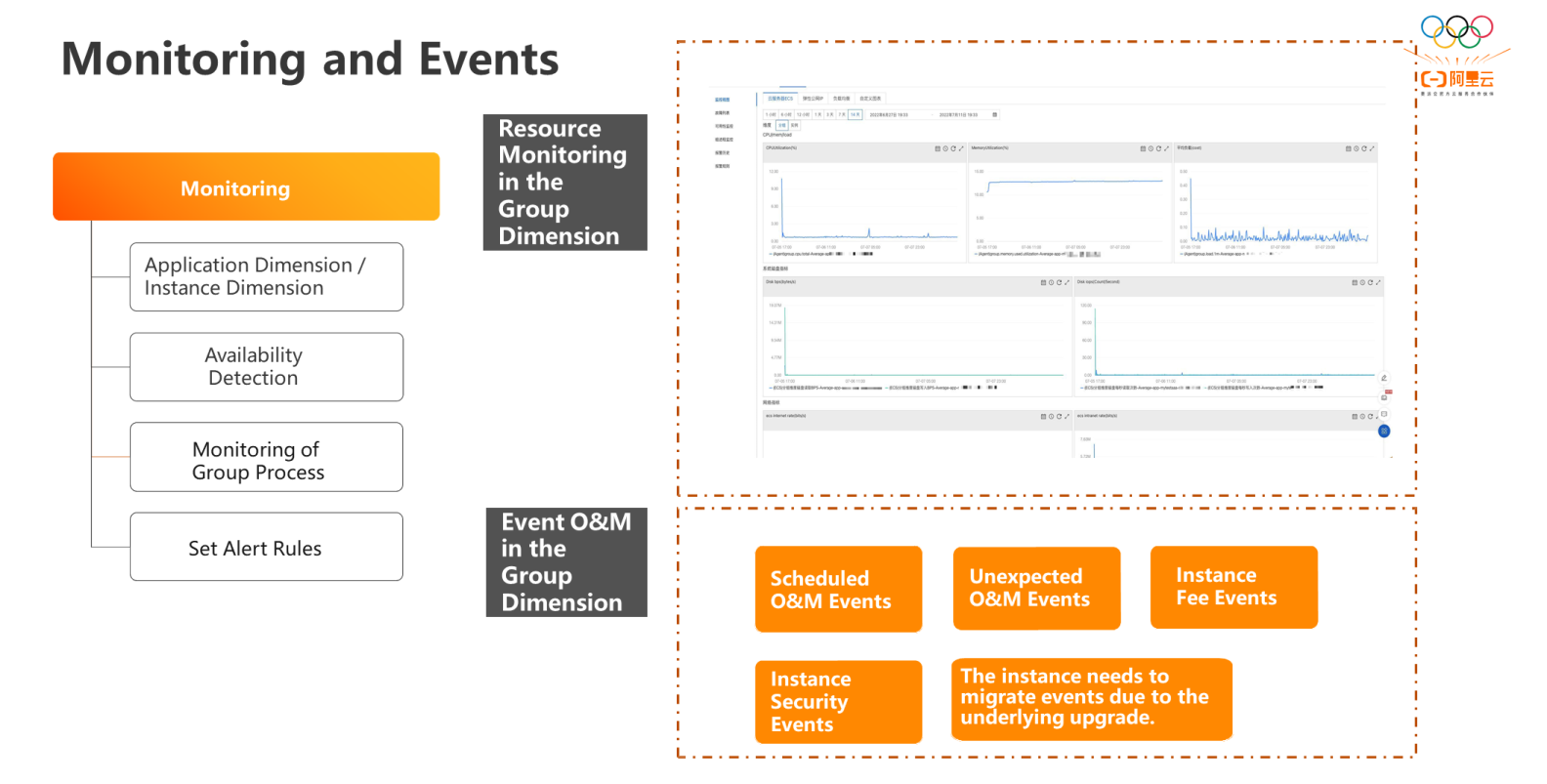
Next, let's talk about monitoring and events. If users import some resources to an application group, they can view all monitoring data, such as CPU utilization and load balancing metrics in a group. Users can also be equipped with alert-related capabilities, CloudMonitor capabilities, and more.
In addition, event O&M integrates five system events. They include scheduled O&M events, unexpected O&M events, instance fee events, instance security events, and instance migration events due to underlying upgrades.
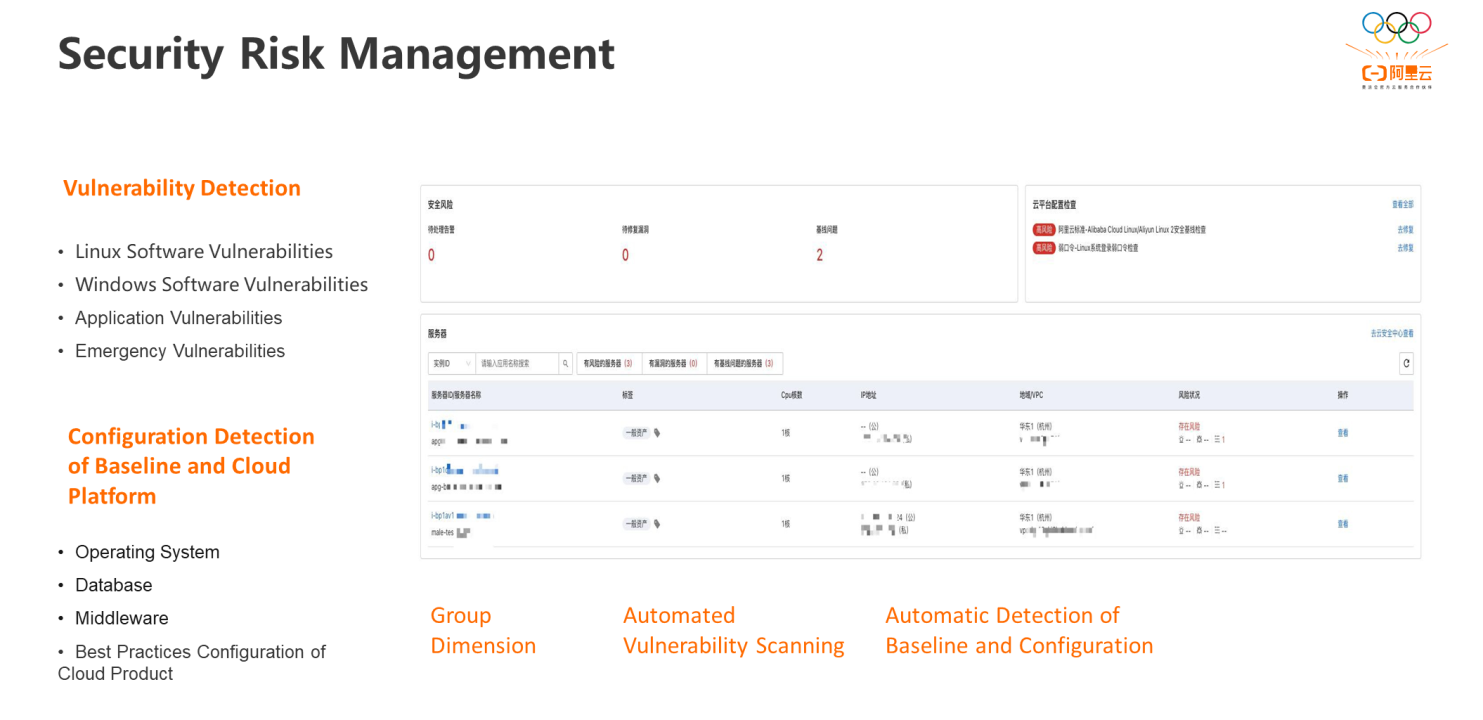
Security risk management mainly contains cloud security scanners and baseline and cloud platform configuration detection. Cloud security scanner regularly scans Linux software vulnerabilities, Windows software vulnerabilities, application vulnerabilities, and emergency vulnerabilities.
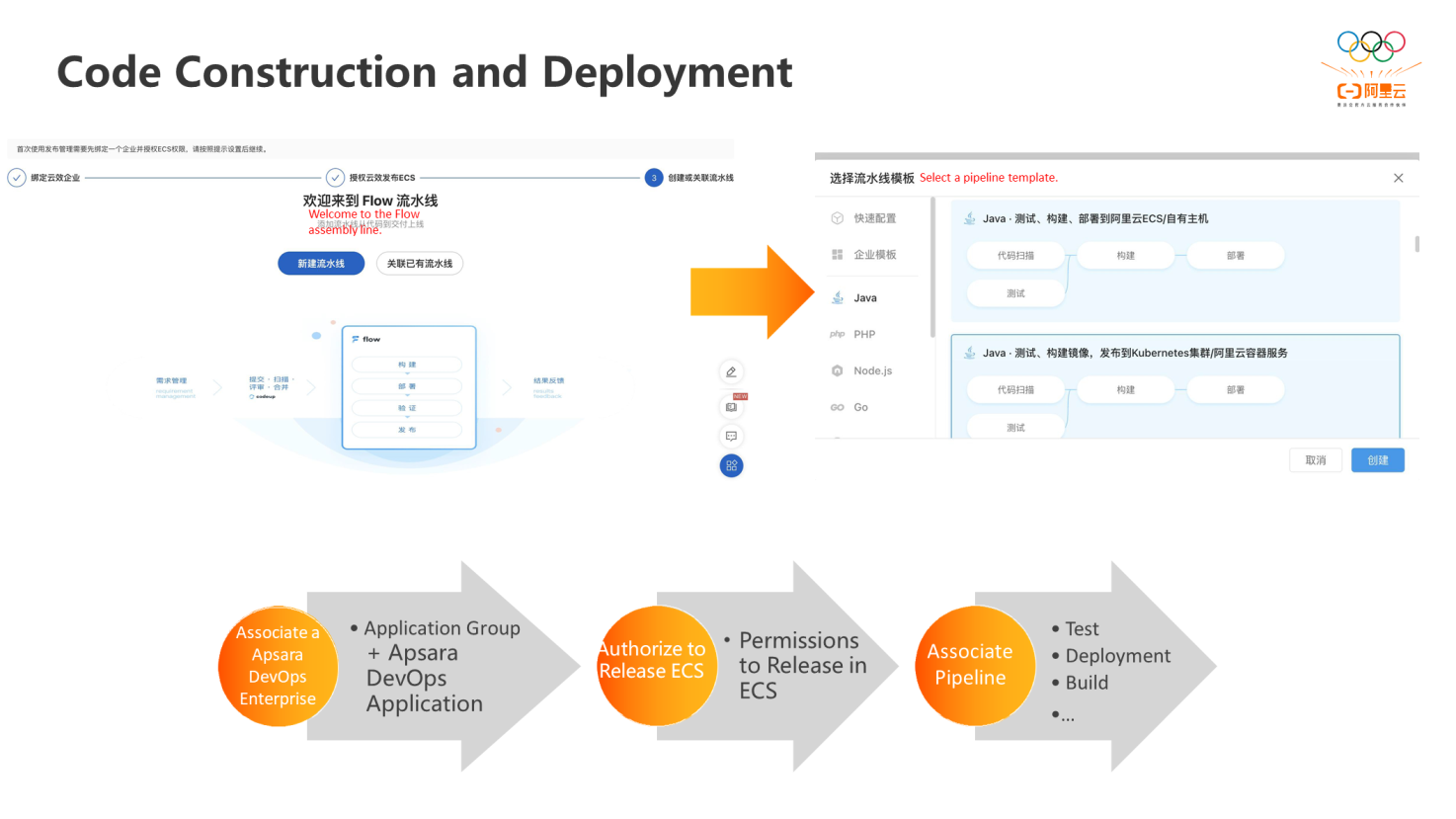
As shown in the preceding figure, when building code, users need to bind an Apsara DevOps enterprise, create pipelines, authorize the release of ECS, and associate the pipeline to scan, build, deploy, and test the code. Finally, publish it to a Kubernetes cluster, Alibaba Cloud container service, ECS, or hosts.
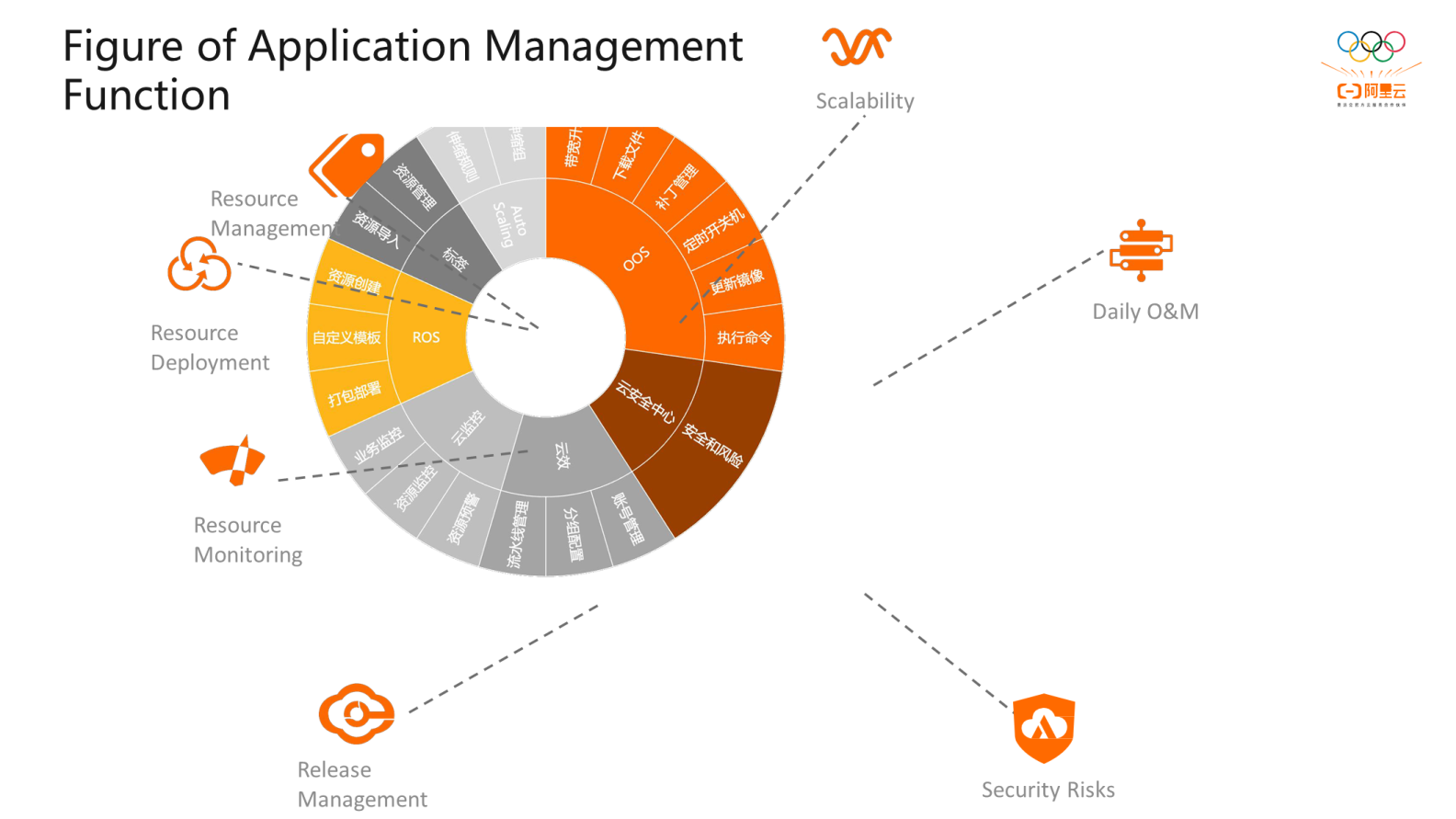
This article helps you understand O&M and control from the resource dimension to the application group perspective.
Application groups can import all resources and manage and maintain these resources. In addition, application groups support auto scaling, automated O&M, monitoring and alerting, and resource control capabilities.
Q1: What factors will prompt an organization or enterprise to consider introducing DevOps?
A1: When there is a large number of resource controls with complex business and high O&M costs. Automation tools of DevOps can be used to reduce costs and increase efficiency.
Q2: What security-related issues will be encountered in DevOps?
A2: When it is related to user permissions, users with different permissions can perform automation-related tasks. They can grant different permissions by labels.
Q3: Is the API of the automation function open?
A3: Yes, it is. Resource import, CloudMonitor, and auto scaling are capabilities of the Open API. They can be called through Alibaba Cloud or SDK.
Q4: What difficult problems may be encountered in the process of business growth?
A4: As the business grows, users are decentralized and billed. Different roles can be associated by grouping or different labels. As resources grow, some automated work can be set up in the application group or user orchestration console. Improve resource utilization and save costs through visualization, monitoring and alerting, and auto scaling.

1,097 posts | 322 followers
FollowAlibaba Clouder - June 10, 2020
Alibaba Clouder - September 9, 2020
Alibaba Clouder - September 7, 2020
Alibaba Clouder - July 24, 2018
Alibaba Clouder - September 16, 2020
Alibaba Clouder - April 20, 2017

1,097 posts | 322 followers
Follow ECS(Elastic Compute Service)
ECS(Elastic Compute Service)
Elastic and secure virtual cloud servers to cater all your cloud hosting needs.
Learn More Elastic High Performance Computing Solution
Elastic High Performance Computing Solution
High Performance Computing (HPC) and AI technology helps scientific research institutions to perform viral gene sequencing, conduct new drug research and development, and shorten the research and development cycle.
Learn More Function Compute
Function Compute
Alibaba Cloud Function Compute is a fully-managed event-driven compute service. It allows you to focus on writing and uploading code without the need to manage infrastructure such as servers.
Learn More Elastic High Performance Computing
Elastic High Performance Computing
A HPCaaS cloud platform providing an all-in-one high-performance public computing service
Learn MoreMore Posts by Alibaba Cloud Community